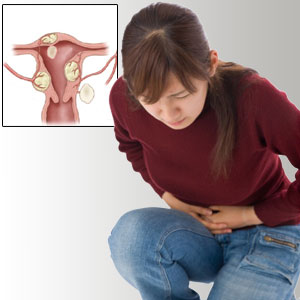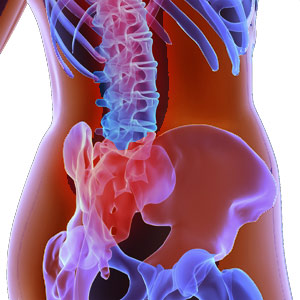Fibroid Tumor

Fibroid tumors are non-cancerous (benign) tumors found in the uterus of women aged between 30 and 40. Fibroid tumors can also develop on other organs that have smooth muscle cells. These tumors are named 'fibroid' tumors because they are solid tumors made of fibrous tissues. They grow as a single nodule or as multiple tumor masses; they grow slowly and show no symptoms.
Only 25% of the fibroid tumors show symptoms and therefore need treatment. While some tumors are microscopic others could be as big as a grape fruit and in rare cases they can cover the entire abdominal area. Uterine fibroid is the most common gynecological tumor in women.
Uterine fibroid tumor
Uterine fibroids are lumps of smooth muscle cells and fibrous connective tissues that grow within the wall of the uterus. The medical term for uterine fibroid tumor is uterine leiomyoma. They are non-cancerous fibroid tumors and the most common among pelvic tumors. These fibroids can grow as a single lump or as clusters and might vary in size (1mm to above 20cm in diameter).
They can grow either within the uterus or can project into the inner cavity or towards the outer surface of the uterus. Uterine fibroid tumors may be prevalent in 20% of women in their reproductive years and in 40% of women aged over 30years. These tumors do not affect women before the onset of menstruation cycle and after menopause. African-American women are highly prone to these tumors as compared to Caucasian women.
The exact reason for the development of fibroid tumors is not known; however it is noticed that fibroid tumor will not develop before the onset of menstruation. Fibroid tumors grow quickly during pregnancy when the body is producing additional estrogen.
The growth of fibroid tumor is spurred when pills containing estrogen are taken for either birth control or menopausal symptoms. When a woman attains menopause, chances of developing fibroid tumor is very unlikely. As she enters the menopausal phase the estrogen level in the body comes down and this discourages the growth of fibroid tumors, already existing tumors may begin to shrink and disappear.
Types of fibroid tumor
Submucous fibroids: They develop right below the lining of the uterus and can cause menstrual problems. They become painful as they grow and move about the pelvic region.
Subserous fibroids: These fibroids grow on the outer wall of the uterus and show no signs or symptoms until they grow and begin to interfere with the other organs of the body.
Intramural fibroid: This is a round type of fibroid that develops within the uterine wall and causes an enlargement in the uterus as it grows.
Interligamentous fibroid: This fibroid grows sideways amidst the ligaments which support the uterus in the abdominal area. It is not easy to remove this fibroid without interfering with the other organs or the blood supply of the body.
Pedunculated fibroids: These fibroids develop when a subserous fibroid develops a stalk (peduncle). They become more twisted and very painful as they grow bigger in size.
Parasitic fibroid: This is the rarest form of fibroid tumor and arises when a fibroid attaches itself to any other organ of the body.
Symptoms of fibroid tumors
- Excessive or abnormal bleeding
- Heavy pain during menstruation
- Pelvic cramping and severe pain during menstrual periods
- Feeling of fullness, pressure or heaviness in the lower abdomen.
- Pressure on the bladder increases the frequency to urinate
- Abdominal fullness or flatulence.
- Pain in the back of the legs.
- Pain during sexual intercourse.
- Heavy bleeding during menstruation and/or passing of clots while bleeding.
- Abrupt or heavy pain due to a pedunculated fibroid.
- Frequency of urination or difficulty in passing urine
- If the fibroid tumor extends towards the back it causes severe backache and constipation
Treatment for uterine fibroid tumors
Treatment is given depending on the size and the growth of the fibroid.
- Pain killers are prescribed for women who have severe cramping and pain during menstruation.
- Birth control pills are prescribed to slow down the growth of tumors and control heavy blood flow during periods.
- Iron supplements are prescribed for women who bleed profusely during their periods. This prevents them anemia.
- Hormonal therapy is given for few women as it lowers estrogen production in the body. This treatment may have side effects such as loss of bone density, vaginal dryness and hot flashes.
- Hysteroscopic resection is used for women who have fibroids growing inside the uterine cavity. A camera and surgical instruments are inserted into the uterus through the cervix and the fibroid tumor is removed.
- Hysterectomy is a permanent solution as the entire uterus is removed through a surgical procedure. In the U.S. two-thirds of the total hysterectomies performed are for the removal of uterus fibroid tumors.
- Embalization stops blood flow to the fibroid tumor thus discouraging its further growth.
- Myomectomy is a procedure where only the fibroid tumor is removed without removing the uterus. This is recommended for women who want to conceive after the fibroid removal.
Surgery for uterine fibroid
Myomectomy: Removal of each individual tumor without any damage to the uterus thus safeguarding a woman's ability to conceive. Chances for the tumor to grow back are high and repeated myomectomy may cause problems to the uterus walls.
Uterine artery embalization: It is a non-surgical process where blood flow to the fibroid is cut off by placing polyvinyl particles in the uterine artery. These particles flow into the vessels and clog them thus totally cutting off blood supply to the fibroid. This will enable the fibroid to shrink in size and disappear.
Hysterectomy: Removal of the uterus is the most effective way to treat fibroids in women who have a complete family and are ready to get their uterus operated. This will get rid of the problem permanently.
Top of the Page: Fibroid Tumor
Tags:#fibroid tumor #uterine fibroid #uterine fibroid tumor #fibroid

Enlarged Uterus
Bacterial Vaginosis
Yeast Infection
Irregular Menstrual Cycle
PMS - Menstruation
Dysmenorrhea
Hypomenorrhea
Mid Cycle Bleeding
Pelvic Organ Prolapse
Vaginal Atrophy
Cervix Cancer
Abnormal Pap Smear
Polycystic Ovarian Syndrome
Ovulation Pain
Uterine Prolapse
Fibroid Tumor
Menorrhagia
Endometriosis Symptom
Galactorrhea
Hysterectomy
Blocked Fallopian Tubes
Menopause and Weight Gain
Premature Menopause
Surgical Menopause
Other health topics in TargetWoman Women Health section:
General Women Health

Women Health Tips - Women Health - key to understanding your health ...
Cardiac Care
Women's Heart Attack Symptoms - Identify heart problems...
Skin Diseases
Stress Hives - Red itchy spots ...
Women Disorders
Endocrine Disorder - Play a key role in overall wellbeing ...
Women's Reproductive Health
Testosterone Cream for Women - Hormone replacement option ...
Pregnancy
Pregnancy - Regulate your lifestyle to accommodate the needs of pregnancy ...
Head and Face
Sinus Infection - Nearly 1 of every 7 Americans suffer from ....
Women and Bone Care

Slipped Disc - Prevent injury, reduce pain ...
Menstrual Disorders
Enlarged Uterus - Uterus larger than normal size ...
Female Urinary Problems
Bladder Problems in Women - Treatable and curable ...
Gastrointestinal Disorders
Causes of Stomach Ulcers - Burning feeling in the gut ...
Respiratory Disorders
Lung function Test - How well do you breathe ...
Sleep Management

Insomnia and Weight Gain - Sleep it off ...
Psychological Disorders in Women
Mood swings and women - Not going crazy ...
Supplements for Women
Women's Vitamins - Wellness needs...
Natural Remedies

Natural Diuretic - Flush out toxins ...
Alternative Therapy
Acupuncture Point - Feel the pins and needles ...
Top of the Page: Fibroid Tumor
Popularity Index: 100,863

